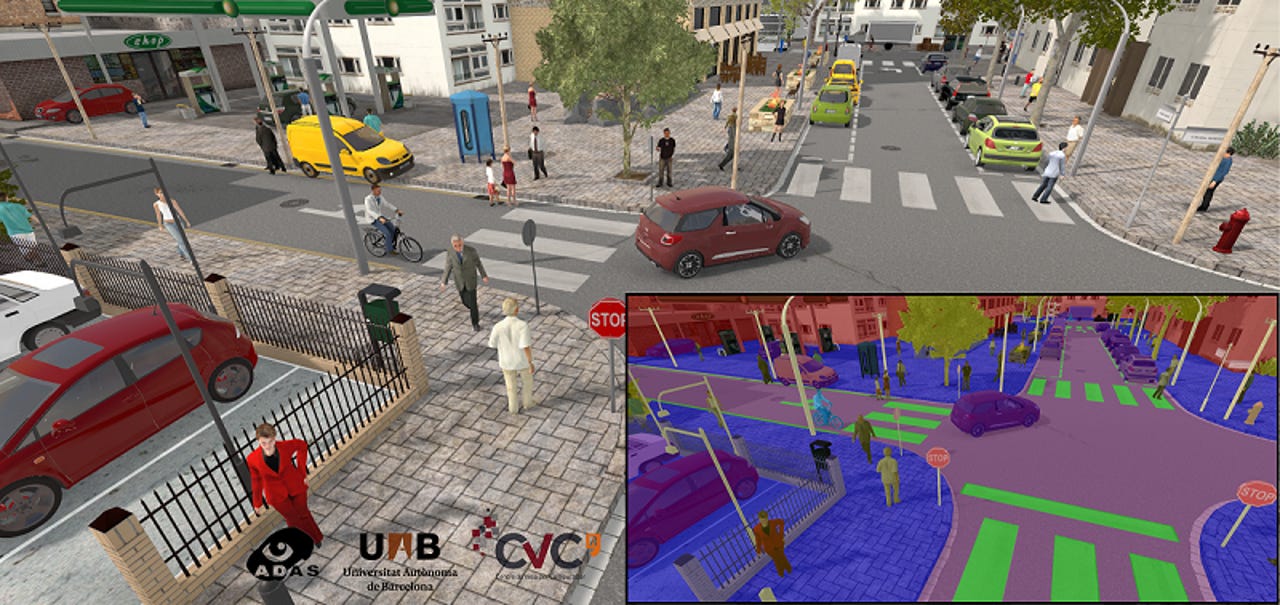Back to self-driving school: The simulator teaching vehicle AIs road sense


Synthia uses convolutional neural networks and deep learning to improve the way vehicle AIs handle what's happening around them.
It's no longer a question of whether self-driving cars will make it into the mainstream but when, according to vehicle-systems expert Antonio López.
Despite his optimism, a number of challenges still remain before driverless cars come anywhere close to displacing human drivers. One of them is teaching vehicles how to recognize obstacles and situations, so they can figure out how to react.
It's precisely to tackle that issue that Synthia has been developed by the Autonomous University of Barcelona's Computer Vision Center, where López is head of advanced driver assistance systems.
Synthia is a simulator that uses convolutional neural networks and deep learning to improve the way vehicle artificial-intelligence systems handle what is happening around them, even in bad weather conditions.
The project began eight years ago, before Google's self-driving car, now spun off as Waymo, appeared on the scene and before Elon Musk's attempts to loosen human drivers' grip on the steering wheel.
"We started with the detection of pedestrians and with commercial video games," researcher and associate computer-science professor López tells ZDNet.
"Now with the sensors we use, we can see what the content of each pixel in an image is. We also know how far these objects are from the camera, which is crucial information for vision systems."
Driving AIs are being trained with a huge set of real-world images to recognize various elements and be able to distinguish, for example, a sidewalk from the road on a heavy rainy day. Using this tagged information, the software interprets inputs from the car's cameras and decides how to react.
"We've modeled an autonomous car within Synthia so we can make tests and be sure the vehicle does execute the orders it's receiving," López says.
"We've also tested some models to detect pedestrians with the real autonomous car developed by the Autonomous University of Barcelona. But that doesn't necessarily prove that a self-driving car works better than any other car."
Data generated by the simulator is available to serve the scientific community and enable progress in this field. However, there is still a long way ahead.
According to López, the key challenge of the self-driving car is the urban environment, which is "complex and uncontrollable". Still, he foresees a partial introduction of this type of vehicle in cities in 10 years' time.
"In 2050, 75 percent of the population will live in cities and that will make it impossible for everyone to have a car," he says. "Smart fleets will ease mobility. Cars will talk to each other and everything will be safer. But we don't need to run too fast to get to that point."
For the moment, López and his team want to concentrate on improving Synthia to deal with more data and handle different kinds of situation.
Meanwhile, another hub of innovation initiated by SEAT, Volkswagen Group Research, and the Polytechnic University of Catalonia and labelled Cooperative Automotive Research Network, or CarNet, is working on some initiatives to make it easier to find parking spaces in the city, assessing the impact of multiple-user shared-vehicle systems and designing a new concept of urban mobility.